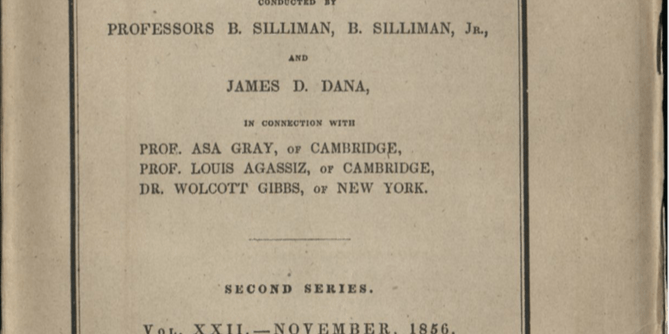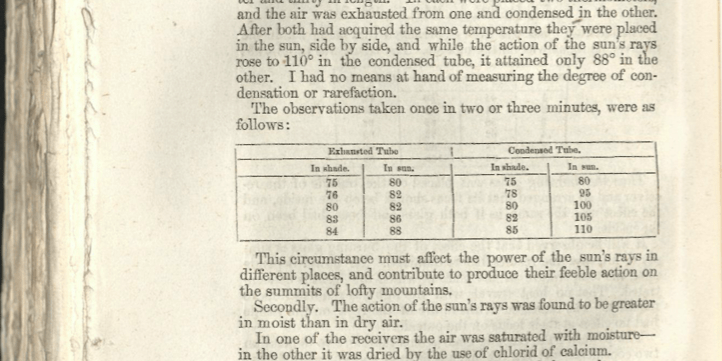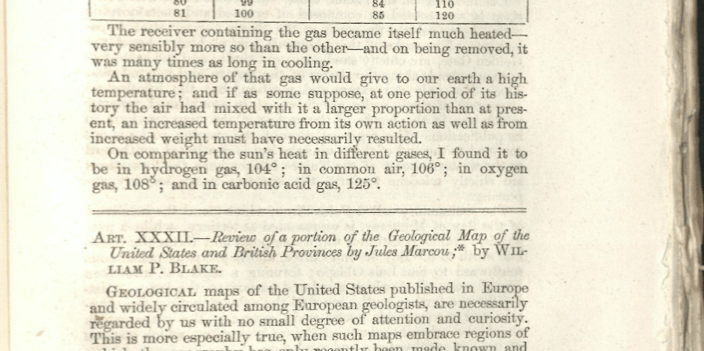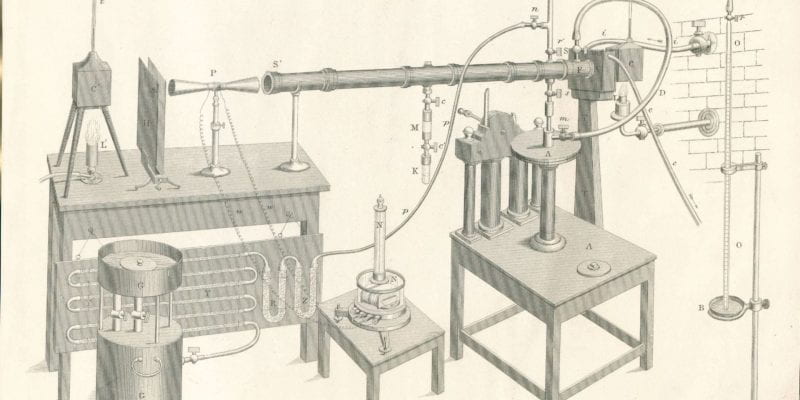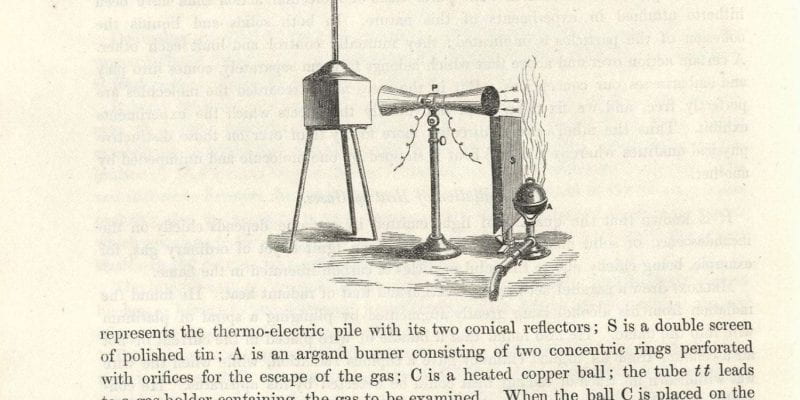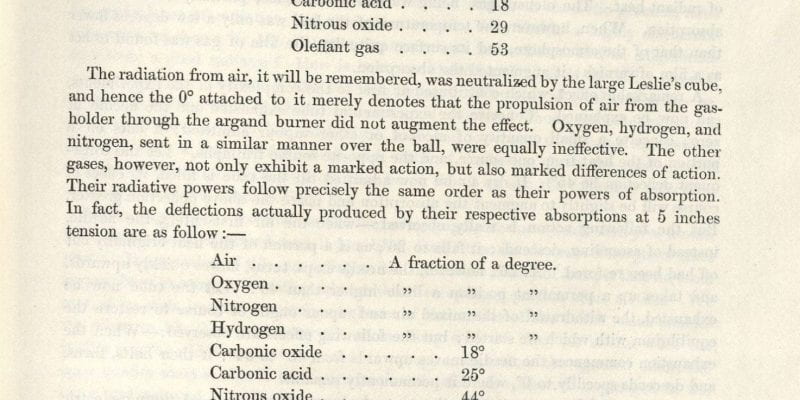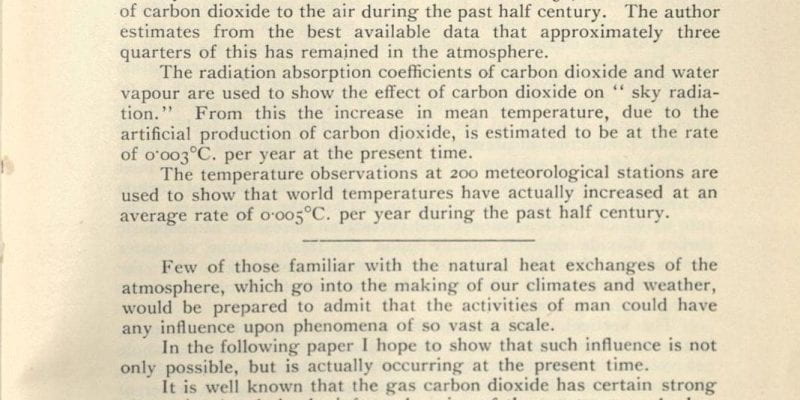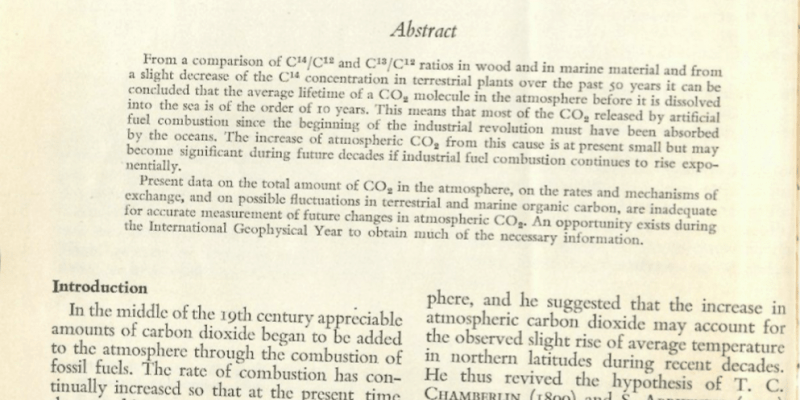Eunice Newton Foote and John Tyndall
In 1861, Irish physicist and mountaineer John Tyndall presented the results of his experiments which used a complex set of instruments to demonstrate that the existence of water vapor and “carbonic acid” (what we today call carbon dioxide or CO2) in the atmosphere facilitates heat capture, and thus influences Earth’s surface temperature. Tyndall has long been recognized for this contribution to science, even though it was not original. Using less sophisticated equipment, Eunice Newton Foote also concluded that concentrations of certain atmospheric gases might have previously impacted Earth’s temperature, writing “an atmosphere of [carbonic acid] would give to our earth a high temperature.” Her findings were presented at the 1856 annual meeting of the American Association for the Advancement of Science by a male colleague, but not included in the conference proceedings, though a short paper was published later the same year. Both Foote and Tyndall were primarily concerned with understanding Earth’s past temperature fluctuations relative to glacial periods. It is not known whether Tyndall had read or was familiar with Foote’s research.
John Tyndall
The Bakerian lecture: on the absorption and radiation of heat by gases and vapours, and on the physical connexion of radiation, absorption and conduction
Royal Society of London, 1862
Eunice Newton Foote
Circumstances affecting the heat of the Sun’s rays.
The American Journal of Science and Arts, 1856
CO2 PPM in 1856 and 1862: 286.2 and 286.1
![Svante Arrhenius, <i>Världarnas utveckling</i>, Stockholm: Hugo Gebers Förlag, [1906]](https://eartharchives.psu.edu/files/2020/04/Varldarnas-Utveckling-Cover-216x300.jpg)
Världarnas utveckling,
Stockholm: Hugo Gebers Förlag, [1906]
Worlds in the Making
Despite the contemporary strain of climate change skepticism and denial, humans have comprehended the fundamental science for over one hundred years. Among the many early scientists who contributed to our modern understanding of climate and atmospheric systems, Swedish chemist Svante Arrhenius is regarded for his efforts to articulate the greenhouse effect. Working at the end of the 19th-century, he sought to understand temperature fluctuations between glacial periods. While he is credited with demonstrating how future accumulations of carbon dioxide in the Earth’s atmosphere would cause a corresponding increase in temperature, he incorrectly estimated it would take 3000 years before Earth warmed by three or four degrees. Arrhenius later published his findings as Ueber den Einfluss des Atmosphärischen Kohlensäuren-gehalts auf die Temperatur der Erdoberfläche, in the Proceedings of the Royal Swedish Academy of Science, 1896, and for a general audience in his 1906 work, Världarnas utveckling, which translates in English to “Worlds in the Making.” In the decades since Arrhenius published his findings, Earth’s temperature has increased by nearly one degree Celsius (1.5 degrees Fahrenheit). Current predictions of the United Nations’ Intergovernmental Panel on Climate Change (IPCC) predict that Earth may reach a 1.5 degree temperature increase over pre-industrial levels by as early as 2030.
Svante Arrhenius
Världarnas utveckling
Stockholm: Hugo Gebers Förlag, [1906]
CO2 PPM in 1906: 297.9
A Vast Geophysical Experiment
Within decades after the “greenhouse effect” was understood, scientists began to study anthropogenic influences on atmospheric temperatures. In 1938, Guy Stewart Callendar published his research linking human fossil fuel combustion to fractional increases in Earth’s annual temperature. Far from viewing this conclusion with concern, Callendar instead celebrated that “the return of the deadly glaciers should be delayed indefinitely.” In 1957, Roger Revelle and Hans Suess of the Scripps Institution of Oceanography published their research concluding that the continued burning of fossil fuels like coal and oil would likely lead to dramatic increases in atmospheric carbon dioxide – what the authors called “a large scale geophysical experiment.” Revelle gave Congressional testimony about his findings to the House Appropriations Committee in 1956 and 1957, and later served on President Lyndon Johnson’s Science Advisory Committee. In a 1965 statement, President Johnson echoed the language of Revelle and Suess, stating: “Within a few short centuries, we are returning to the air a significant part of the carbon that was extracted by plants and buried in the sediments during half a billion years. Through his worldwide industrial civilization, Man is unwittingly conducting a vast geophysical experiment. Within a few generations he is burning the fossil fuels that slowly accumulated in the earth over the past 500 million years.”
Guy Stewart Callendar
“The artificial production of carbon dioxide and its influence on temperature.”
Quarterly Journal of the Royal Meteorological Society 64, no. 275 (1938)
Roger Revelle and Hans E. Suess
“Carbon dioxide exchange between atmosphere and ocean and the question of an increase of atmospheric CO2 during the past decades.”
Tellus 9, no. 1 (1957)
CO2 PPM in 1938 and 1957: 309.6 and 314.7
![Svante Arrhenius, Världarnas utveckling, Stockholm: Hugo Gebers Förlag, [1906]](https://eartharchives.psu.edu/files/2020/04/Varldarnas-Utveckling-Cover-1383x1500.jpg)
